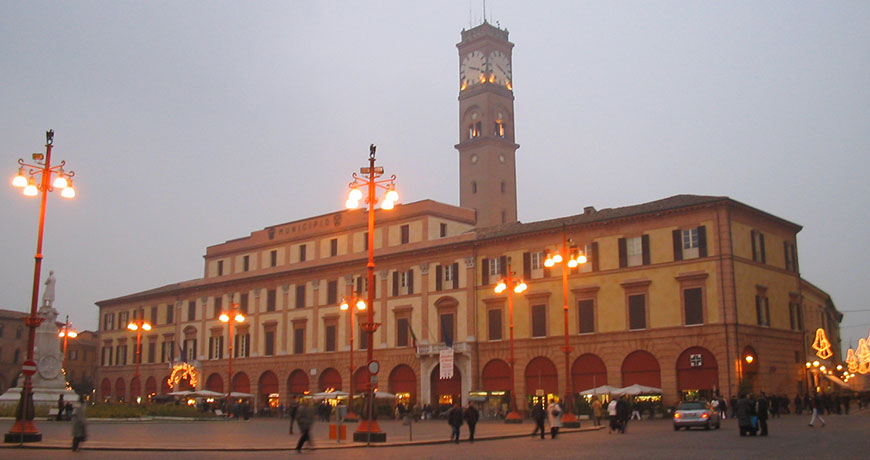Touristic information: Forli

Forlì, anciently Forum Livii, Livio's Forum, already shows its Roman origin in the name. After the construction of the via Emilia, Forlì enjoyed a long time of tranquillity as a gathering and sorting agricultural centre, and enjoyed its moment of maximum splendour with the annexing to Ravenna's Exarchate. The history of Forlì has been a continued subtracting itself from the church's influence, later to return under it. The city's first liberation took place in the 11th century, and it was a free municipality until 1480, under the rule of the Ordelaffi family. Back under papal dominance, in 1500 it is taken by the Duke Valentino, Cesare Borgia, who held it for a short while. The setting for important "Carbonari" activities, in 1859 it was annexed to the Savoy monarchy and was fertile ground for the creation of various political organizations. Throughout the twenty years of fascism Forlì is transformed in the "città del Duce" and a taste for the pictorial, as well as heavy bombing, have equally marked the city landscape of Forlì.
The basilica of San Mercuriale, in the city's main square, is one Forlì's oldest monuments and it is dedicated to Aurelio Saffi. The church was built in the 12th century where, since the 5th century, there was already a sacred building dedicated to Santo Stefano. Next to it stands a contemporary bell tower and a 15th century square cloister. In the same square also stand the Palazzo del Podestà, a Romanic-Gothic building built in 1460, showing a façade with three ogives, each with a different light, and the Palazzo del Municipio, ancient house of the Ordelaffi family, heavily modified throughout the centuries.
The Duomo, the cathedral of Santa Croce, is in piazza Ordelaffi, and it was built in 1425. The building we see today is in neoclassic taste, since the original was mostly demolished and then re-built at the end of the 19th century.
In the southern part of town rises the Rocca di Ravaldino or di Caterina Sforza, a squared fortified construction built in the 14th century and later expanded. This military citadel was taken in 1500 by Cesare Borgia, when he succeeded in ousting Caterina Sforza.
Finally, a visit to Forlì cannot leave out a visit to Cesena, just a few kilometres south along the via Emilia. The city, built in prehistoric times, has precious monuments such as the cathedral of San Giovanni Battista, the Biblioteca Malatestiana and the Rocca.
All the events rotate around Forlì. Definitely worth visiting, Brisighella's Medieval Festivals: held between June and July, every year they are inspired by a different theme, with exhibitions, entertainment along the city ways and great square shows and concerts. Also worth seeing are the Feste Artusiane in Forlimpopoli, Pellegrino Artusi's birth town which, in June, is transformed into "Artusopoli". For nine days the city is entirely dedicated to culture, food and shows.
